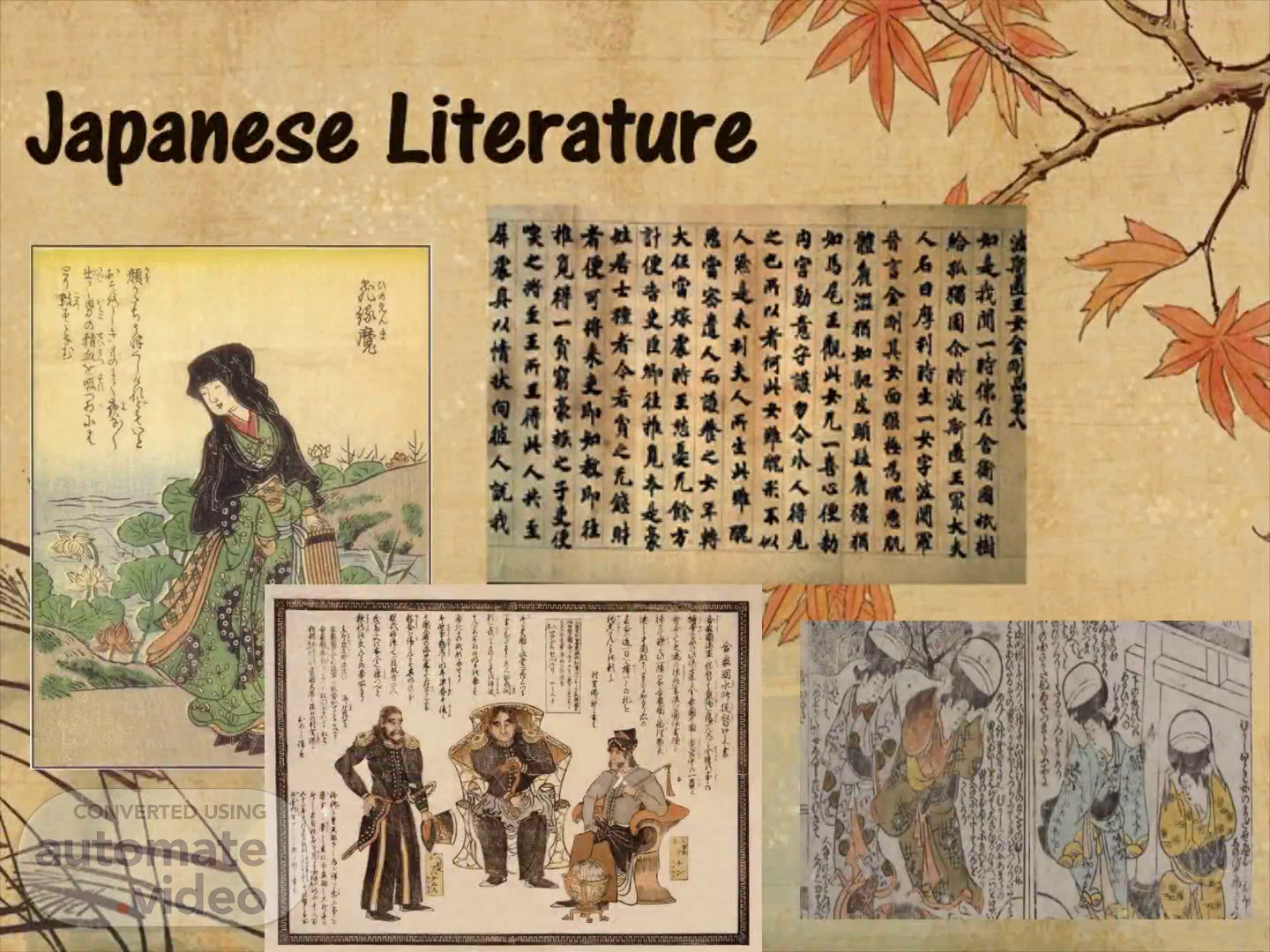
Japanese Literature
Scene 1 (0s)
Japanese Literature. Japanese Literature. Extensive Introduction to Japanese Literature | World Literature.
Scene 2 (12s)
Earliest Japanese Literature. Japanese literature spans a period of almost two millennia and comprises one of the major literatures in the world comparable to English literature in age and scope it comprises a number of genres including novels poetry drama travelogues personal diaries and collections of random thoughts and impressions.
Scene 3 (29s)
Kojiki. Kojiki or the records of ancient matters which is an early japanese chronicle of myths legends hymns oral traditions and semi-historical accounts concerning the origin of the japanese archipelago.
Scene 5 (52s)
Neon shoki. Neon shokior the chronicles of japan is the second oldest book of classical japanese history the book is also called the nihongi or the japanese chronicles.
Scene 7 (1m 15s)
The noh play. The Noh play which is the oldest surviving form of Japanese theater it combines music dance and acting to communicate Buddhist themes. Often the plot of no play recreates famous scenes from well-known works of Japanese literature such as the tale of genji which we will talk about later in other words no place like adopting a certain literary warp for a stage play.
Scene 9 (1m 43s)
Japanese Drama. Drama had become one of Japans favorite forms of amusement since ancient time Drama has written dialogues and state action it's a literary genre that allows actors to act out a writer's words directly to an audience.
Scene 10 (1m 58s)
Joruri or Bunrako puppet drama. JORURI is a type of chanted opera that came to be used as a script in bonrako puppet drama the puppets are beautifully made and are usually lifelike in size they are expertly manipulated and the dialogue realistically interpreted.
Scene 11 (2m 14s)
Kabuki play the play of masses. The kabuki play or the play of the masses it is less intellectual more realistic even sensation Alkabuki theater is known for its heavily stylized performances the often glamorous costume worn by performers and for the elaborate kumadori makeup worn by some of its performers..
Scene 13 (2m 39s)
Japanese Poetry. MANYOSHI The oldest collection of japanese poetry is called manyoshi which translates to collection of myriad thieves it was compiled in 800 a.d.
Scene 14 (2m 53s)
HAIKU. Traditional and structured, this short form of Japanes poetry is well-known for its rule of 5/7/5: five syllables in the first line, seven in the second, and five again in the third. Haikus are known for their ability to paint a vivid picture in just a few words. A practice of artistic discipline, their minimal nature forces writers to pare down to only the essentials—making each word, or even syllable, count..
Scene 15 (3m 19s)
“The Old Pond” by Matsuo Bashō An old silent pond A frog jumps into the pond— Splash! Silence again.”.
Scene 16 (3m 44s)
JAPANESE NOVELS. The tale of genji is a classical work of japanese literature written in the early 11th century by the noblewoman murasakishikibu the work recounts the life of hikaru genji or shining genji who is the son of an ancient japanese emperor known to readers as emperor kiritsubo and a low-ranking concubine called kiritsibo consort The Novel tale of genji has a originally a 54chapters long and more than a thousand pages in length..